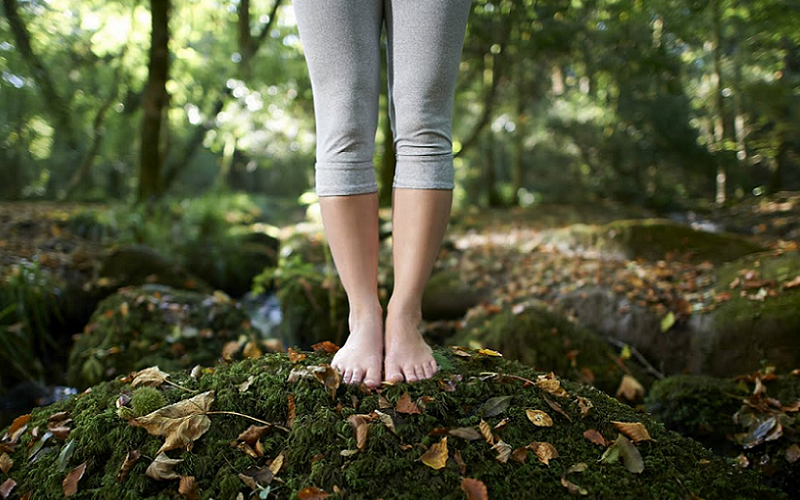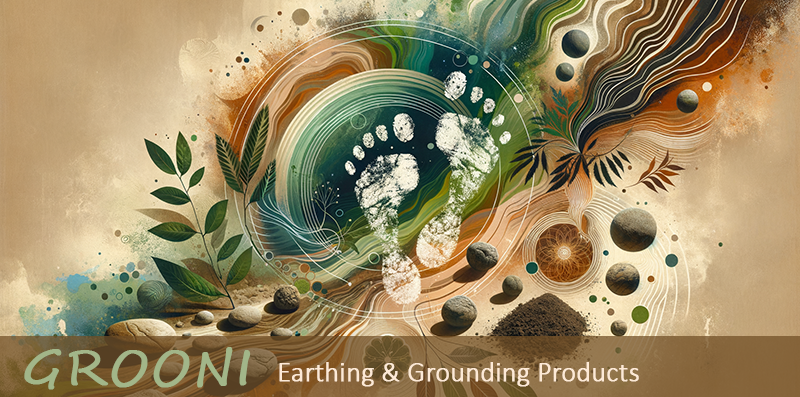
It might seem a little unusual at first—using the Earth itself as a way to calm the mind and ease anxiety. But grounding, also known as earthing, taps into the Earth’s natural energy to support both physical and mental wellness. This practice has gained popularity for its potential to reduce stress, improve mood, and even promote a sense of inner calm, helping many people handle the daily roller coaster of emotions.
Contents
- What Is Grounding and How Does It Work?
- The Science Behind Grounding and Anxiety Reduction
- Practical Grounding Techniques to Ease Anxiety
- Grounding and Cortisol: Calming the Stress Hormone
- Grounding and Its Impact on Sleep Quality and Mental Clarity
- Integrating Grounding into Your Life for Long-Term Benefits
- About the Author
What Is Grounding and How Does It Work?
Grounding, or earthing, is the practice of reconnecting with the Earth’s natural energy by coming into physical contact with it. Imagine going barefoot on a sandy beach or feeling the cool grass underfoot. These actions may not just feel good—they might also be supporting your body in powerful ways. The theory behind grounding suggests that by making contact with the Earth, we allow its electrons to enter our bodies, balancing our electrical charge and neutralizing harmful free radicals.
Why It Matters for Mental Health
Grounding is thought to help stabilize mood and reduce anxiety because of its effects on stress hormones and brain chemistry. By bringing the body back into a natural state of electrical balance, grounding may promote relaxation, potentially lowering cortisol levels. As cortisol drops, many people experience reduced stress and a lighter mood.
Grounding may also influence our “fight-or-flight” response. When we’re stressed, the body often becomes stuck in this high-alert mode, which can lead to chronic anxiety. By connecting with the Earth’s calming energy, grounding might help reset our stress response, making us feel more present and less reactive to stressors.
The Science Behind Grounding and Anxiety Reduction
While grounding might sound a bit mystical, there’s growing scientific interest in its potential effects. Studies on grounding show that this practice might indeed have a real impact on the body’s stress response, inflammation levels, and mood. For instance, a study published in the Journal of Alternative and Complementary Medicine found that grounding can reduce blood viscosity, which may have significant implications for cardiovascular health, an area closely linked to stress and anxiety.
Influence on the Autonomic Nervous System
The autonomic nervous system (ANS) is key in managing our stress response. Grounding appears to shift the ANS out of its sympathetic “fight-or-flight” mode and into the parasympathetic “rest-and-digest” state. In a grounded state, people tend to experience slower heart rates and improved heart rate variability, indicators of reduced stress and anxiety. This shift helps the body and mind to relax and focus on healing and restoration rather than defense.
While grounding doesn’t “cure” anxiety, it offers a potential method to calm the body and mind. For those seeking natural alternatives to improve mental health, grounding might be a tool to integrate with other wellness practices.
Practical Grounding Techniques to Ease Anxiety
You don’t need any fancy equipment or major changes to your routine to start grounding. The simplest way is to step outside and place your bare feet directly on the earth, whether it’s grass, soil, or sand. This practice might feel strange at first, especially in a world where shoes and concrete keep us far removed from nature, but that’s part of its charm—and its effectiveness.
Popular Grounding Methods
- Walking Barefoot: The classic method for grounding. Simply take off your shoes and stand on the Earth. Walking barefoot for even 10 minutes a day might be enough to reduce stress.
- Grounding Mats: For those who can’t go outside daily, grounding mats provide a convenient alternative. Placed underfoot or in bed, these mats connect to the Earth’s energy through electrical grounding.
- Touching Natural Water: Another form of grounding involves direct contact with water sources like lakes or rivers, which connect us to the Earth’s natural conductivity.
Using a Grounding Sheet or Mat at Night
If you prefer a hands-off approach, grounding sheets and mats are designed to keep you connected with the Earth while you sleep. This is an excellent option for anyone who wants the benefits of grounding without dedicating time to it during the day. These sheets work by transferring electrons through conductive material, effectively “plugging” you into the Earth’s energy while you rest. Many users report waking up feeling refreshed and noticing a sense of calm, less stress, and fewer instances of waking up during the night.
Grounding and Cortisol: Calming the Stress Hormone
Cortisol, our primary stress hormone, often rises when we experience anxiety. This hormone can be helpful in short bursts but detrimental if levels remain elevated. Chronic cortisol release is associated with symptoms like sleep disruption, mood swings, and general feelings of stress or nervousness.
Grounding’s Effect on Cortisol Levels
One study showed that participants who engaged in grounding had significantly lower nighttime cortisol levels, which is crucial for better sleep and reduced anxiety. As cortisol levels decrease, people may feel more balanced and less prone to stress. By potentially stabilizing this hormone, grounding offers an accessible tool to bring calm to both body and mind.
When cortisol is balanced, we tend to feel lighter, more focused, and less reactive. This explains why grounding, though seemingly simple, could have a powerful impact on our mental well-being.
Grounding and Its Impact on Sleep Quality and Mental Clarity
A healthy sleep pattern is essential for mental clarity, mood stability, and resilience against stress. Unfortunately, anxiety can disrupt sleep and set off a cycle that worsens mental health. Grounding, particularly when practiced through the use of grounding sheets or mats at night, has been associated with improved sleep quality.
How Sleep Influences Mood and Anxiety
Our brains need restful sleep to recharge, manage emotions, and regulate stress responses effectively. Poor sleep can intensify symptoms of anxiety and make us more susceptible to feeling overwhelmed. Grounding may promote a deeper, more restful sleep, allowing the mind to “reset” overnight.
People who use grounding sheets often report improvements in their overall mood and a calmer response to stressors. This calmer mental state upon waking can set the tone for the day, making it easier to face challenges with resilience and optimism.
Integrating Grounding into Your Life for Long-Term Benefits
If you’re interested in grounding as a tool for mental wellness, consistency is key. Grounding isn’t a quick fix, but rather a practice that builds benefits over time. Start small by spending a few minutes each day in contact with the Earth, and gradually increase this practice as it becomes part of your routine.
Combining Grounding with Other Relaxation Techniques
Grounding can pair well with other methods that support mental wellness, such as deep breathing exercises, mindfulness meditation, or simple stretching routines. By connecting with the Earth, you set a solid foundation for stress relief, which can be enhanced by these complementary practices.
Benefits Beyond Mood and Anxiety
While this article focuses on grounding’s effects on mood and anxiety, it’s worth noting that grounding has potential benefits that extend beyond mental wellness. Many practitioners report reduced pain, improved energy levels, and even a better immune response. So if grounding seems to help you in multiple areas of health, consider it an all-around wellness booster.
As with any wellness practice, consistency and an open mind are key. Grounding may seem like a small step, but it has the potential to bring noticeable improvements to mental clarity, stress resilience, and mood stability over time.

